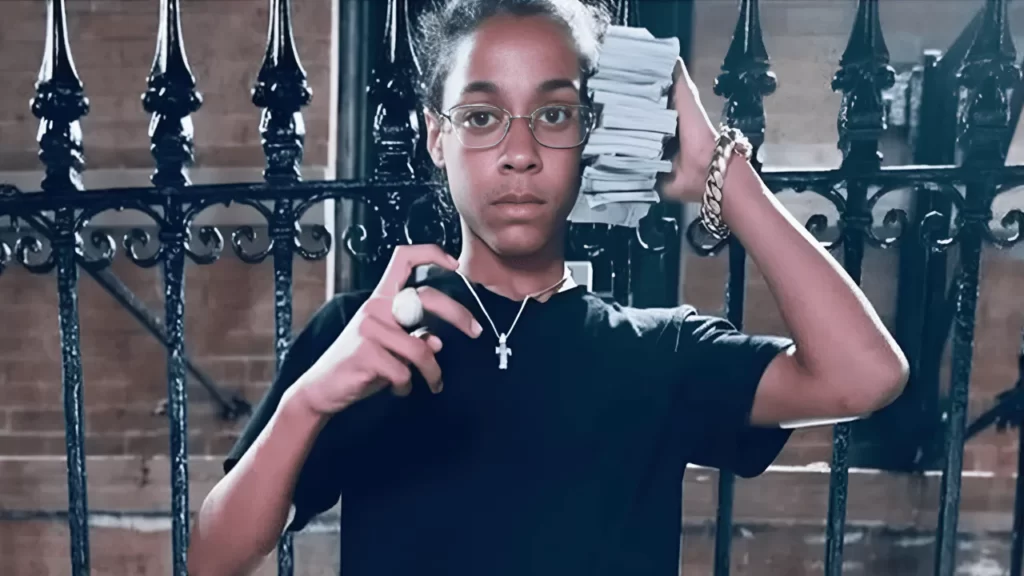Kelvin Martinez: Notti Osama Stabbing Case & Updates
Was justice served in the case of Ethan Reyes, the young rapper known as Notti Osama? The dismissal of charges against Kelvin Martinez, the teenager accused of fatally stabbing Reyes, has ignited a firestorm of debate, raising complex questions about accountability, self-defense, and the pervasive influence of gang culture.
The incident, a tragic clash of teenage lives on a New York City subway platform, unfolded on a Saturday afternoon in the summer of 2022. Fourteen-year-old Reyes, a rising star in the burgeoning drill rap scene, crossed paths with 15-year-old Martinez at the City College West 137th Street station in Harlem. A dispute, reportedly fueled by rival gang affiliations and possibly involving a girl, escalated into a physical altercation. Surveillance footage captured the chaotic scene: a struggle, a flash of metal, and Reyes collapsing to the platform. He was rushed to Mount Sinai Morningside Hospital, but his young life was tragically cut short.
| Category | Details |
|---|---|
| Name | Kelvin Martinez |
| Age (at time of incident) | 15 |
| Charge | 2nd-degree murder (later dismissed) |
| Court Case | New York State, New York County, Supreme Court Case Number: 151578/2025 Filed: 02/04/2025 Last Filing: 03/17/2025 |
| Incident | Fatal stabbing of Ethan Reyes (Notti Osama) |
| Date of Incident | July 9, 2022 (Saturday) |
| Location of Incident | City College West 137th Street subway station, Harlem, New York City |
| Alleged Motive | Dispute over a girl, rival gang affiliations |
| Reference | New York Times Article on Notti Osama's Death |
Initial reports identified Martinez as the perpetrator, and he was subsequently arrested and charged with second-degree murder. However, the case took a dramatic turn when the charges were ultimately dismissed. The prosecutions decision, shrouded in a degree of secrecy due to legal restrictions surrounding juvenile cases, fueled speculation and controversy. While the exact reasons for the dismissal remain unclear, some sources suggest that a claim of self-defense played a significant role. Martinezs legal team may have argued that he was acting in response to a perceived threat, possibly armed with a broomstick, as some reports indicate. This raises the thorny question of whether the force used was proportionate to the threat, a question complicated by the chaotic nature of the altercation and the presence of rival gang dynamics.
The public reaction to the dismissal was swift and divided. Some expressed outrage, arguing that justice had not been served for the slain rapper. Memorials sprung up at the subway station, a testament to the young life tragically cut short. Others, however, pointed to the complexities of the case, highlighting the challenges of navigating the legal system, particularly when dealing with juveniles and allegations of self-defense. The presence of gangs added another layer of complexity. Reyes cousin, Kelvin Ventura, suggested that the rappers involvement in street life contributed to the tragedy, a stark reminder of the dangerous realities that too often ensnare young people in marginalized communities.
The case of Ethan Reyes and Kelvin Martinez is more than just a tragic tale of two teenagers. It serves as a microcosm of the broader societal issues plaguing urban America: gang violence, the allure of street life, the challenges faced by underserved youth, and the complexities of the justice system. While the legal proceedings may have concluded, the search for answers and the quest for a more just and equitable society continues.
The details surrounding the case, particularly Martinezs potential involvement in other activities from his reported connection to Logic Jiu Jitsu and a possible role at Best Buy to mentions of his playing for the Dominican Republic men's national team paint a complex picture of a young man whose life intersected with both promise and tragedy. Untangling the truth from rumor and speculation remains a challenge, further underscoring the need for a more nuanced understanding of the circumstances surrounding this deeply saddening event.
The echoing sentiments of rapper Jim Jones, who warns of the inherent dangers of the rap profession, resonate deeply in the wake of Reyes' death. This tragedy serves as a chilling reminder of the precariousness of life, particularly for young artists navigating the complex and often volatile world of hip-hop. The dismissal of charges against Martinez leaves a void, a sense of unresolved questions that linger in the air, demanding further examination and reflection.


